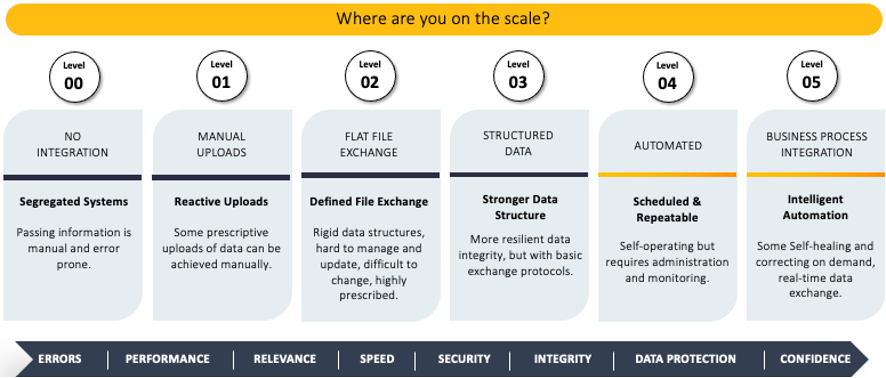
The Human Capital Management (HCM) market continues to grow with expectations that it will expand by over $12 million by 2025. Several factors contribute to its continued growth - from expanded capabilities to the pandemic accelerating the move to the cloud and global expansion. The HCM has evolved into more than simply a library or storage of employee data to that of a full suite of not only HR but also talent offerings. Today, major HCM platforms such as Oracle, SAP SuccessFactors, UKG and Workday support employees from recruitment to retirement and everything in between.
How does HCM benefit payroll?
Good global payroll is a byproduct of business process in the HCM system, as the HCM enables automation of the payroll process. Payroll and HCM can work together to provide -
- Greater confidence in compliance
- Later cut-off dates for payroll close
- Improved accuracy of employee personal information
- Reduced volume of payroll queries due to inaccuracies
What does true integration look like?
Integration is the seamless flow of information through an entire business process, regardless of the source of truth, and creates a unified user experience. But for true integration, we need to start thinking bigger beyond just integration of systems to build an integrated business process. One where -
- Payroll teams carry out detailed models of how their payroll staff manage and process payroll
- Payroll and HR managers engage with their Tech and Finance teams
- Usability targets are identified to reduce any training requirements
- All business process outcomes are supported
How mature is your integration?
You may be thinking to yourself that your global payroll solution and HCM system are already integrated, so your work here is finished. But the key to a true integration that delivers maximum possible value out of both systems is having not only integrated systems but integrated business processes.
Take a look at the chart below to rate where your organization is on the path to achieving business process integration. For some, it may surprise you that there are so many levels of integration.

If you are starting on the integration journey, then it’s critical that you understand what is needed.
3 building blocks of a true integration
- Uses intelligent application programming interfaces (APIs)
- Operates with good HCM and payroll data at the source
- Works between certified providers
APIs
Thomas Otter offers a comprehensive explanation of APIs and their importance in The Role APIs Play in Securing the Safety and Success of your Payroll Integration. In the most basic sense, APIs enable the movement of data between systems. “The API stops the wrong data coming through, and the better your API, the better your data in your HCM.”
Good, clean data
Payroll teams work with data such as core records, non-core records like bank details and country-specific information, and payroll inputs.
Certified payroll providers
Most all HCMs offer a certification or validation process. Your HCM provider can point you in the direction of their global payroll partners and if the provider you have chosen to work with has successfully achieved certification. Official certification from your HCM providers means that you are guaranteed a level of quality and that your payroll provider has passed rigorous testing around security, data validation and the overall quality of the integration.
The global payroll provider and HCM integration
Not surprisingly, the global payroll provider plays a critical role in the success of the integration. If your organization is going to market for a new global payroll solution, there are many areas to consider as you look at who will make a good partner:
- Have they achieved certification or have an officially recognized integration with your HCM provider?
- If you are planning to change HCM providers, do they offer a certified integration to the HCM providers in which you plan to consider?
- What type of APIs do they offer?
- Can they operate at scale- as you grow, how will they accommodate the additional headcount?
- What measures do they have in place when things go wrong?
- What sort of security guarantees do they offer? For example, are they ISO certified.
The capabilities of HCMs continue to evolve, and so too will the capabilities of integration. In time we will see a drive to self-service functionality, especially around enabling employees greater engagement with the HCM and control of their payroll data, and a more intelligent user interface. By creating a seamless information exchange between HCM and payroll, you can reduce the time and costs associated with managing disparate data and increase the time spent effectively utilizing this information to make informed data-driven decisions
If you are interested in more insights into how your payroll team can prepare for and optimize integration between your payroll solution and your HCM, I recommend watching Realize the Benefits of HCM investment. Dave and Will have managed extensive HCM and payroll integrations and this session infuses their expertise with real-world practical tips and advice.

